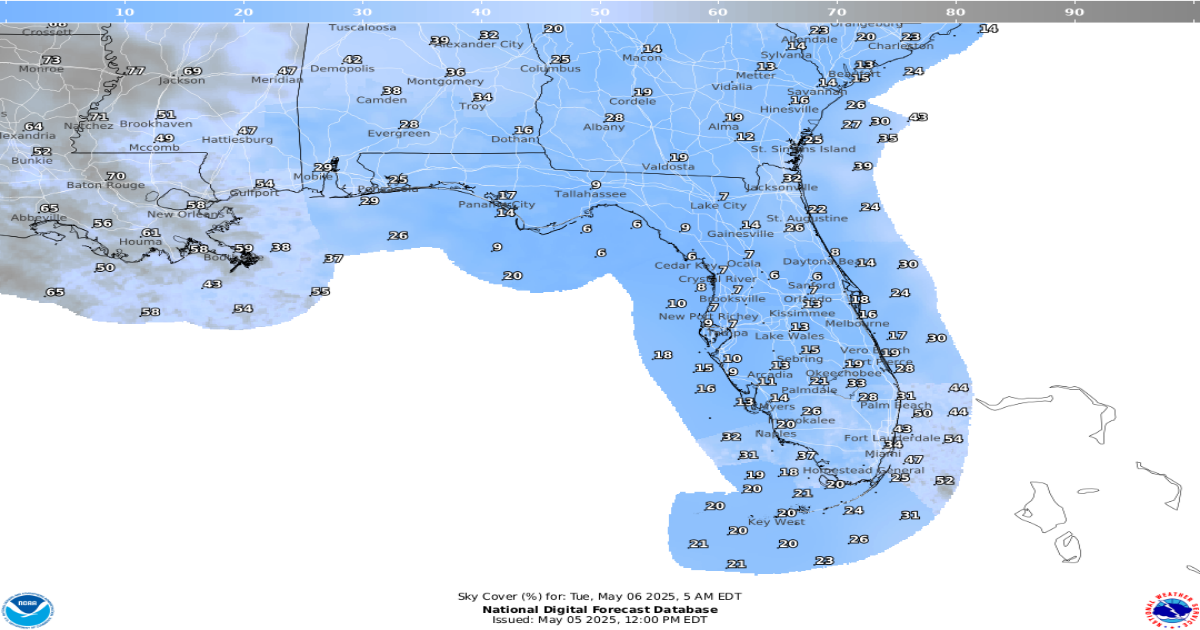Early this morning — and we’re talking about before sunrise on May 6 — will be your last chance to head outside to catch the peak period of the Eta Aquarid meteor shower.
If you slept in Tuesday morning, you might still be able to spot a few meteors until May 21, although they won’t be as bright as they were during the peak of May 5-6.
The annual meteor shower is caused when Earth passes through the debris left behind by Halley’s comet.
Eta Aquarid meteor shower peak hits May 5-6, 2025
The Eta Aquarids peak during early May each year. In 2025, the Eta Aquarids meteor shower have been active since April 20 and will continue to be visible until May 21. The peak viewing days are May 5-6, according to NASA.
About 10 meteors will be visible per hour in the Northern Hemisphere. The best view is actually in the Southern Hemisphere.
“Eta Aquarid meteors are known for their speed, with the meteors traveling at about 40.7 miles per second into Earth’s atmosphere,” NASA said.
The Eta Aquarids meteors originated from Halley’s comet, known officially as comet 1P/Halley, according to NASA. The last time comet Halley was seen by casual observers was in 1986. It will re-enter the inner solar system again in 2061.
When will you be able to see Halley’s comet?
The last time comet Halley’s comet was seen by casual observers was in 1986. It will re-enter the inner solar system again in 2061.
The Earth will pass through Halley’s path around the sun again in October 2025. This creates the Orionid meteor shower, which peaks around Oct. 20, according to timeanddate.
When is the best time to see the Eta Aquarid meteor shower?
The best time to see the Eta Aquarid meteor shower will be during the hours right before dawn, about 4 to 5 a.m.
Where should you look to spot the Eta Aquarids?
Look low on the horizon. It’s best to lie on your back, with your feet facing east, NASA said.
Find an unobstructed view away from lights. It’ll take about 30 minutes for your eyes to adapt to the darkness for you to be able to see the meteors.
Will clouds block your view of Eta Aquarid meteor shower in Florida May 6?
Cloud cover looks good at 5 a.m. May 6 to provide a good view of the Eta Aquarid meteor shower from Florida.
Conditions look good across all of Florida, with very few clouds to block your view.
Eta Aquarid meteor shower viewing conditions around Florida
Timeanddate provides viewing conditions of the Eta Aquarid meteor shower each day.
Factors considered include:
- radiant (where the meteor shower originates)
➤ Enter your city and date to see viewing conditions where you live
When is the next meteor shower?
Two meteor showers will peak in late July.
The Southern Delta Aquariids are active beginning in mid-July and are visible until late August, according to NASA, with the peak nights July 29-30. You’ll be able to see about seven to eight meteors per hour. “These faint meteors are difficult to spot, and if the moon is visible, you will not be able to view them,” NASA said.
Also visible will be the Alpha Capricornids, which are active from July 12 through Aug. 12. The peak will arrive July 30. “This shower is not very strong and rarely produces in excess of five shower members per hour,” according to the American Meteor Society.
When is the next full moon?
The next full moon will be the Flower Moon on May 12.
This article originally appeared on The Daytona Beach News-Journal: Eta Aquarid meteor shower: Where to look, when see, Florida conditions

